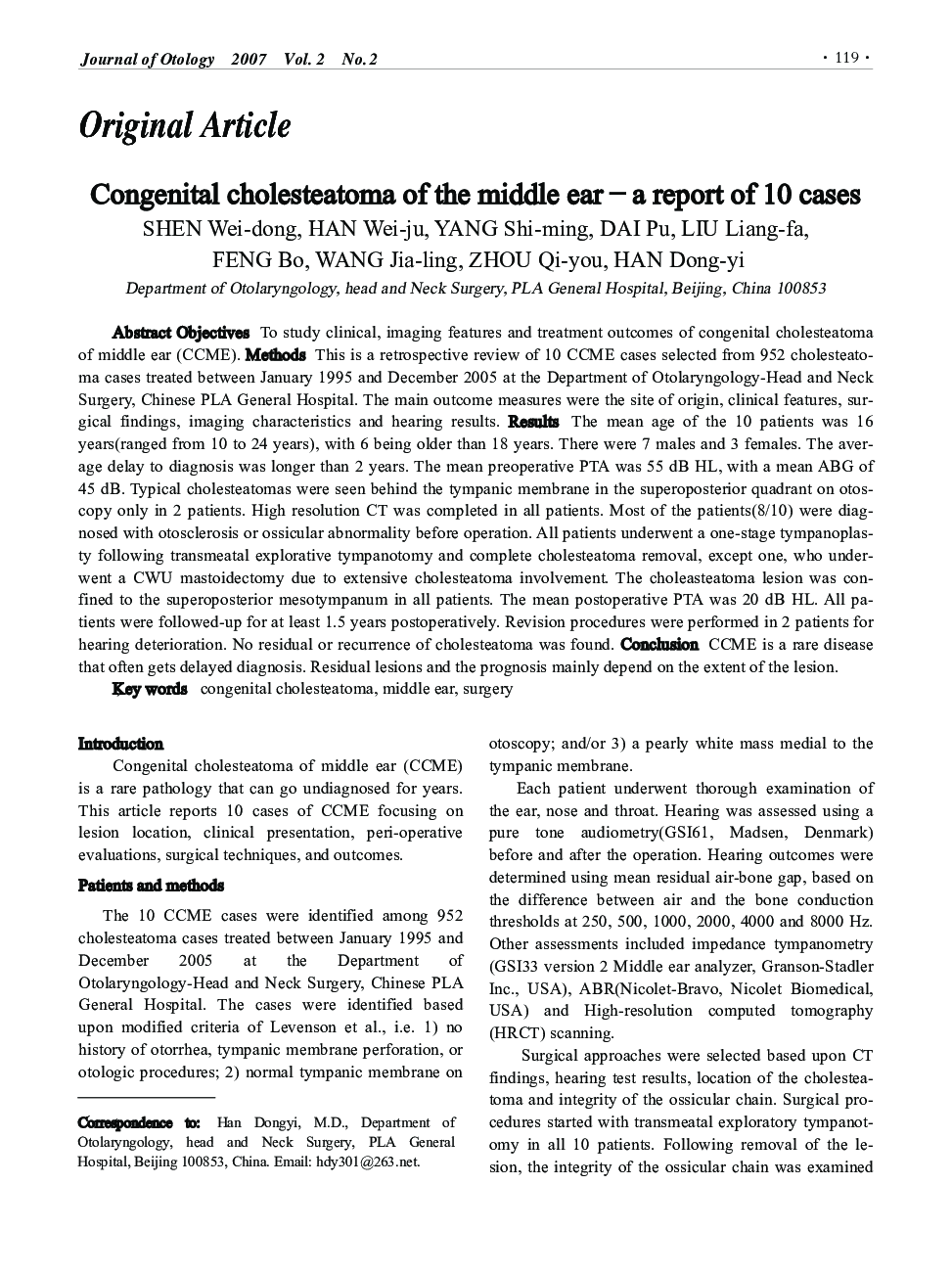| Article ID | Journal | Published Year | Pages | File Type |
|---|---|---|---|---|
| 4116933 | Journal of Otology | 2007 | 5 Pages |
ObjectivesTo study clinical, imaging features and treatment outcomes of congenital cholesteatoma of middle ear (CCME).MethodsThis is a retrospective review of 10 CCME cases selected from 952 cholesteatoma cases treated between January 1995 and December 2005 at the Department of Otolaryngology-Head and Neck Surgery, Chinese PLA General Hospital. The main outcome measures were the site of origin, clinical features, surgical findings, imaging characteristics and hearing results.ResultsThe mean age of the 10 patients was 16 years(ranged from 10 to 24 years), with 6 being older than 18 years. There were 7 males and 3 females. The average delay to diagnosis was longer than 2 years. The mean preoperative PTA was 55 dB HL, with a mean ABG of 45 dB. Typical cholesteatomas were seen behind the tympanic membrane in the superoposterior quadrant on otoscopy only in 2 patients. High resolution CT was completed in all patients. Most of the patients(8/10) were diagnosed with otosclerosis or ossicular abnormality before operation. All patients underwent a one-stage tympanoplasty following transmeatal explorative tympanotomy and complete cholesteatoma removal, except one, who underwent a CWU mastoidectomy due to extensive cholesteatoma involvement. The choleasteatoma lesion was confined to the superoposterior mesotympanum in all patients. The mean postoperative PTA was 20 dB HL. All patients were followed-up for at least 1.5 years postoperatively. Revision procedures were performed in 2 patients for hearing deterioration. No residual or recurrence of cholesteatoma was found.ConclusionCCME is a rare disease that often gets delayed diagnosis. Residual lesions and the prognosis mainly depend on the extent of the lesion.
